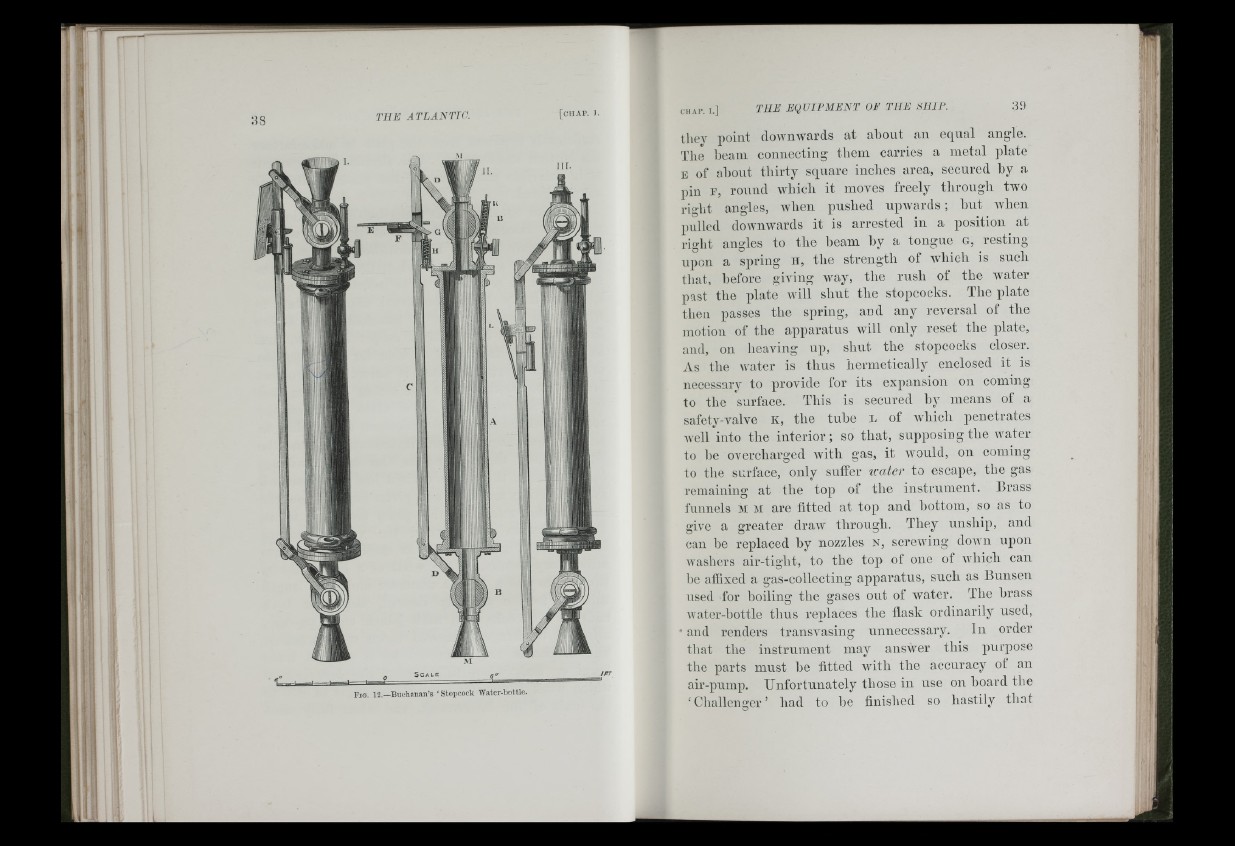
:ifft:
i .'A
38
Ll- I I I
S c a l e
Fig . 12.—B uchanan's ‘ Stoiicook Water-hottle.
they point doAvnwards at ahout an equal angle.
The heam connecting them carries a metal plate
E of ahout thirty square Indies area, secured hy a
pin P, round Avhicli it moves freely through tivo
right angles, Avhen pushed upAvards; hut Avlien
pulled doAVUAvards it is arrested in a position at
right angles to the heam hy a tongue g, resting
ii^ion a spring H, the strength of whieli is such
that, before giving way, the rush of the Avater
past the plate Avill shut the stopcocks. The plate
then passes the spring, and any reversal of the
motion of the apparatus wull only reset the plate,
and, on heaving np, shut the stopcocks closer.
A s the water is thus hermetically enclosed it is
necessary to provide for its expansion on coming
to the surface. This is secured hy means of a
safety-valve k, the tuhe l of Avhich penetrates
Avell into the interior; so that, supposing the Avater
to he overcharged Avith gas, it Avould, on coming
to the surface, only suffer ivater to escape, the gas
remaining at the top of the instrument. Brass
funnels M M are fitted at top and hottom, so as to
give a greater draAv through. They unship, and
can he replaced hy nozzles N, screAving doAvn upon
Avashers air-tight, to the top of one of Avhich can
he affixed a gas-collecting apparatus, such as Bunsen
used for hoiling the gases out of Avater. The brass
Avater-hottle thus replaces the flask ordinarily used,
• and renders transvasing unnecessary. In order
that the instrument may answer this purpose
the parts must he fitted Avith the accuracy ot an
air-pump. Unfortunately those in use on hoard the
‘ChallenOger’ had to he finished so hastily that